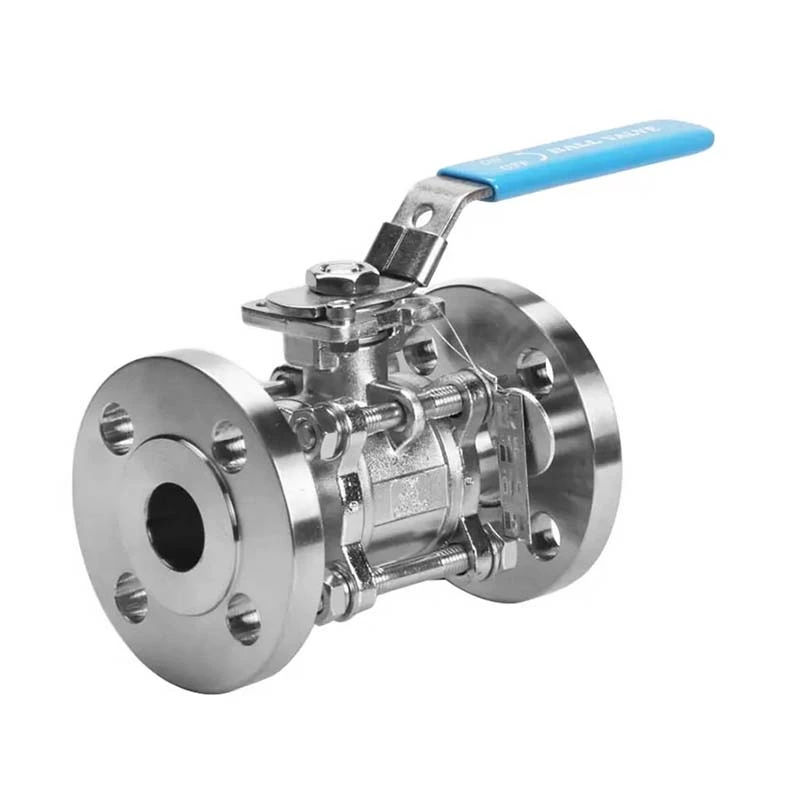Sanitary Ball Valve Installation And Maintenance
(I) Installation
1. Pre-installation Inspection: Carefully inspect the Sanitary Ball Valve model, specifications, and material to ensure they conform to design requirements. Check the exterior for damage or deformation, the interior of the valve for cleanliness, and the sealing surface for scratches, wear, and other defects. Also, check that the actuator wiring is secure, the power supply voltage meets requirements, and the valve operates smoothly.
1. Installation Location: Install the valve in a location that is easily accessible for operation, maintenance, and repair. Avoid installation in blind spots or inaccessible areas of the pipeline. For horizontal pipelines, the valve stem should generally be installed vertically. For vertical pipelines, the valve should be installed above or to the side of the horizontal pipeline for easy operation and observation.
1. Installation by Connection Method
∙ Flange Connection: Align the flanges on both ends of the valve with the pipeline flange. Insert the bolts and tighten evenly. Pay attention to the installation position and tightness of the gasket to ensure a reliable seal. Bolt tightening should be performed symmetrically to avoid flange deformation or seal failure due to uneven force.
∙ Threaded Connections: Apply an appropriate amount of sealant to the threaded connection between the valve and the pipe, then screw the valve into the pipe. Pay attention to the screw-in depth and tightening torque to avoid thread damage or a leaky seal.
∙ Wafer Connections: Place the wafer valve between the two flanges, align the bolt holes, insert the bolts, and tighten. The installation dimensions of the wafer valve should match those of the pipe flanges to ensure a secure installation.
∙ Welded Connections: Preheat the valve before welding and perform welding according to the welding procedure to ensure weld quality. After welding, inspect the weld for defects such as porosity and cracks. During welding, protect the valve sealing surface and actuator from heat damage.
1. Actuator Installation: Install the actuator on the valve according to the product manual, ensuring a secure and concentric connection between the actuator and valve. When connecting the actuator's control and power cables, ensure the wiring is correct and secure to avoid short circuits, open circuits, and other problems.
1. Commissioning: After installation, the electric ball valve should be commissioned. First, check that the valve opens and closes normally and that the actuator moves smoothly and flexibly. Then, send control signals through the control system to test the valve's remote control function and adjustment performance to ensure that the valve accurately responds to control signals and achieves the intended control target.
(II) Maintenance
1. Regular Inspection: Regularly inspect the valve for damage and corrosion, sealing surface leaks, actuator operation, and loose connections. For valves in long-term operation, a comprehensive inspection is recommended quarterly or semi-annually.
1. Cleaning and Maintenance: Keep the valve and actuator clean, regularly removing dust, oil, and impurities from the surfaces. The valve interior may require regular cleaning, depending on the media properties and usage, to prevent impurity accumulation that could affect the valve's normal operation.
1. Lubrication and Maintenance: Regularly lubricate the valve's rotating parts, such as the stem and valve core, to ensure smooth rotation and reduce wear. The choice of lubricant should be determined based on factors such as the valve's operating temperature and the media's characteristics.
1. Seal Maintenance: Inspect the valve's sealing surface for wear and scratches. Minor damage can be repaired; severe damage requires prompt replacement of the seal. For soft-seal valves, pay attention to the service life of the sealing material and regularly replace aged or deformed seals to ensure proper sealing performance.
1. Actuator Maintenance: Inspect the actuator's motor, gearbox, controller, and other components for proper operation. Regularly clean dust from the motor's interior, check the gearbox's oil level and quality, and replenish or replace the lubricant promptly. For modulating actuators, the control signal and travel feedback signal should also be regularly calibrated to ensure control accuracy.
1. Troubleshooting: When a valve malfunctions, the cause should be promptly analyzed and addressed. Common malfunctions include valve leakage, actuator inactivity, and abnormal control signals. If a malfunction cannot be resolved on your own, contact a professional repair technician or the valve manufacturer's after-sales service department.
